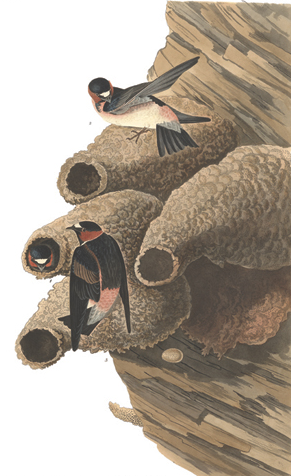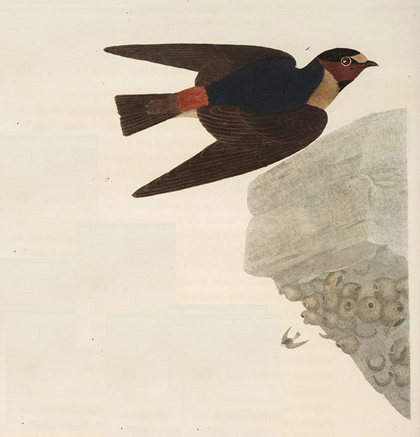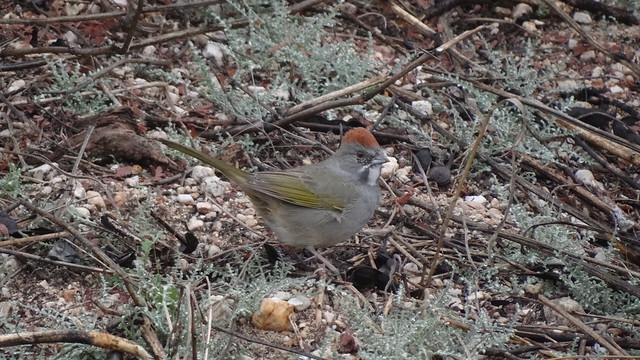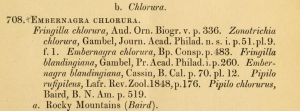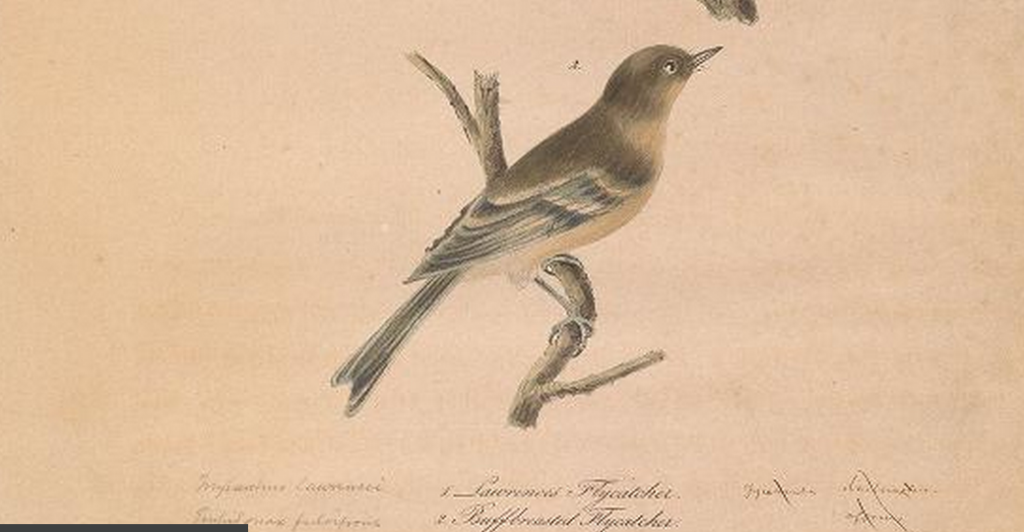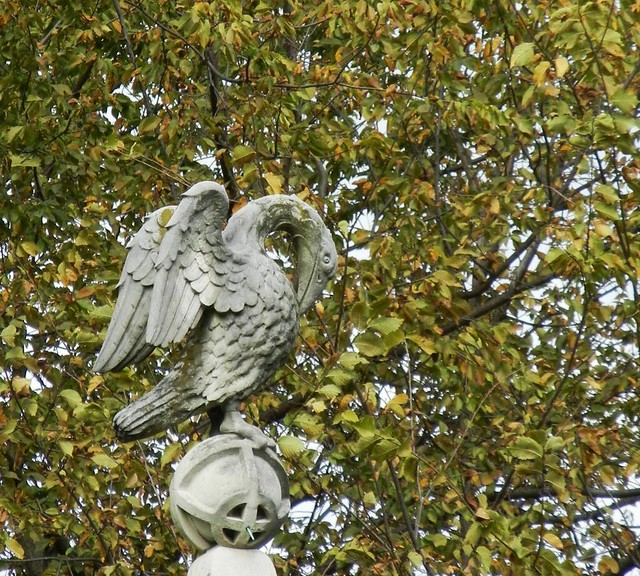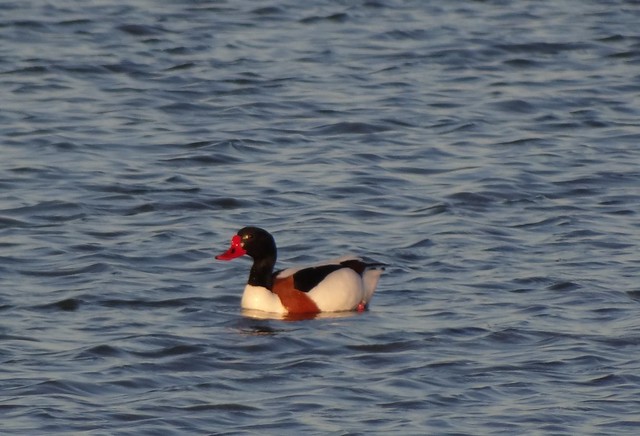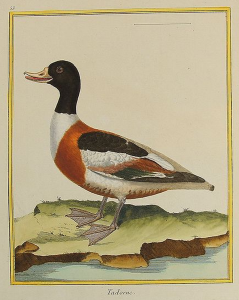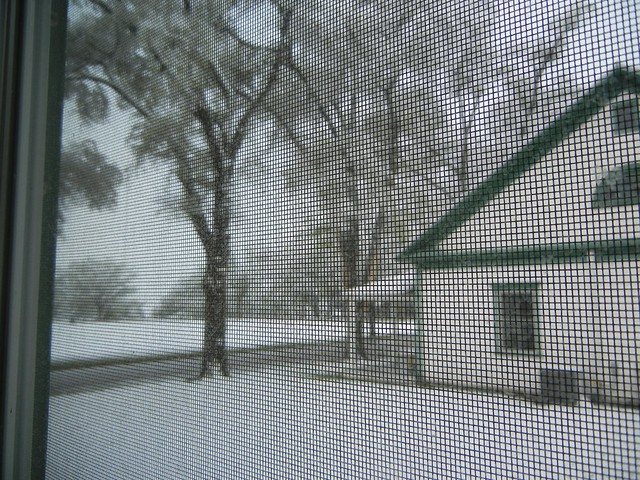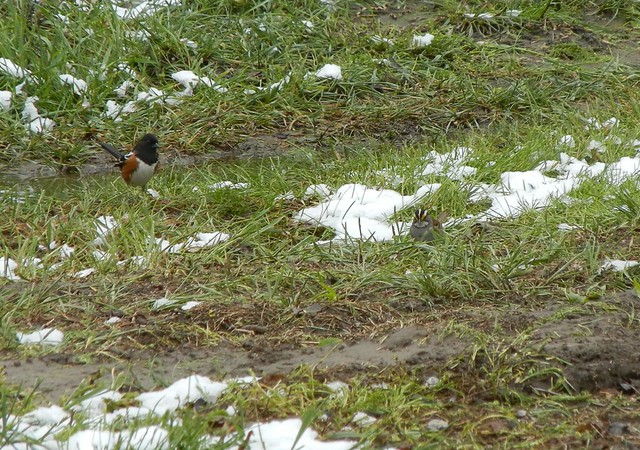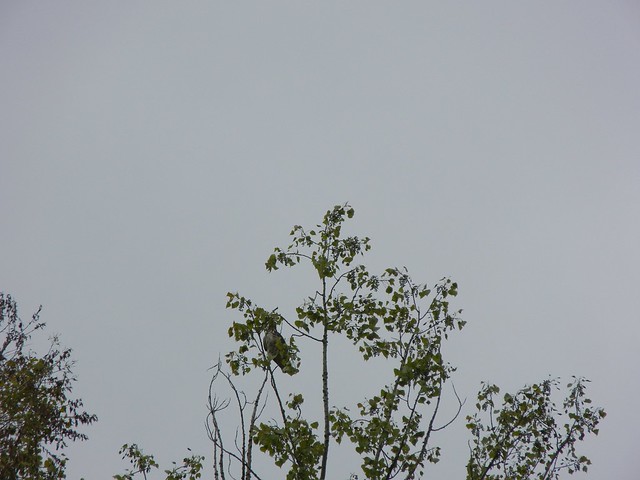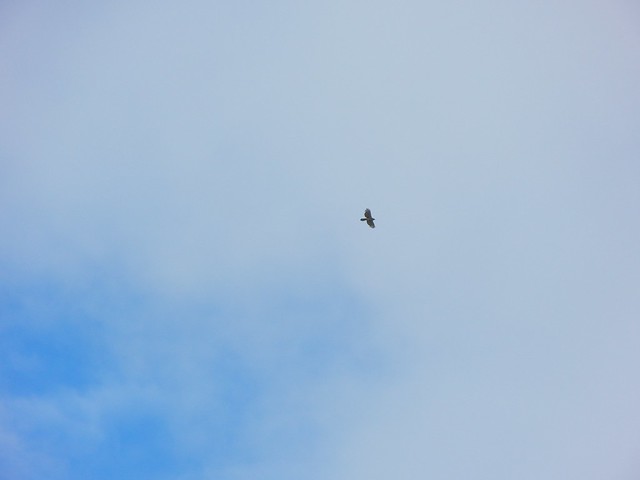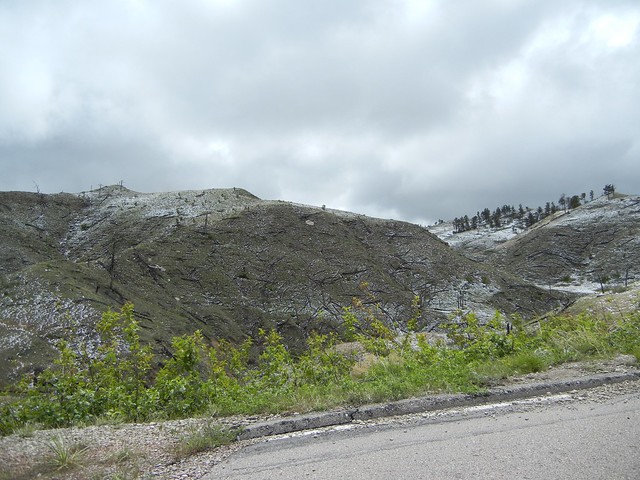The history of the discovery and naming of the cliff swallow is as full of twists and turns as, well, a swallow’s flight.
And inevitably, John James Audubon had to get mixed up in it.
In 1824 — rather late in a game already won by Say and Rafinesque and Vieillot — Audubon submitted to the Lyceum of Natural History of New York a paper in which he, fairly unsubtly, claimed his own priority.
In the spring of 1815, I saw a few of these birds for the first time at Henderson, 120 miles below the falls of the Ohio, on the banks of that river. It was an excessively cold morning in the month of March, and nearly all were killed by the severity of the weather. I drew up at the time a description under the name of H[irundo] Republicana, Republican swallow, in allusion to their mode of association for the purposes of building and rearing their young.
Sadly enough, though,
the specimens, through the carelessness of my assistant [who?], were lost, and I despaired for years of meeting with them again,
and so Audubon’s name, which would otherwise have enjoyed priority, went unpublished.
Now things get interesting.
In the spring of 1819, Robert Best, the curator of the Western Cincinnati Museum, told Audubon about “a strange species of bird … building nests in clusters affixed to walls.”
In consequence of this information, I immediately crossed the Ohio, to Newport in Kentucky, where [Best] had seen those nests the preceding season [that is to say, 1818], and no sooner were we landed, than the chirrups of my long-lost little strangers saluted my ear.
Without so much as mentioning him, Audubon here pulls the rug out completely from under poor Rafinesque, who had described his Hirundo albifrons in February of 1822 — from specimens in the Museum of Cincinnati, taken “near Newport in Kentucky” or Madison, Ohio.
What Audubon’s account boils down to is the claim that he, Audubon, had been there first — in Henderson in 1815, in Newport and Cincinnati in 1819 — and most significantly, well before the famous meeting with Rafinesque in 1820. Audubon does not come out and exactly say that he introduced Rafinesque to the bird, but the implication is clear.
Audubon saved his explicit vitriol for another European colleague, Charles Bonaparte. In the addendum to his account of the species in the Ornithological Biography, he writes
Although the Prince of Musignano [Bonaparte] saw my original drawing, and read the account of the habits of this species in my Journal, as written on the spot, both at Henderson in Kentucky, in the spring of 1815, and again in the same state opposite Cincinnati, in the spring of 1819, and concocted his article on this bird from these sources, he has refrained from making any mention of these circumstances.
That’s not entirely fair: though Bonaparte fails to distinguish those places where he is copying Audubon verbatim from the passages based on his own observation, he does acknowledge his sources at the beginning of the account:
Mr. Dewitt Clinton has recently published a paper on the same subject, accompanied by some observations from Mr. Audubon. Combining what these gentlemen have made known with the information previously given by Vieillot and Say, we can present a tolerably complete history of the Cliff Swallow.
Justified or not, Audubon’s peevishness here is eloquent testimony to just how tangled the naming of the cliff swallow was — and how much it mattered to those involved.

